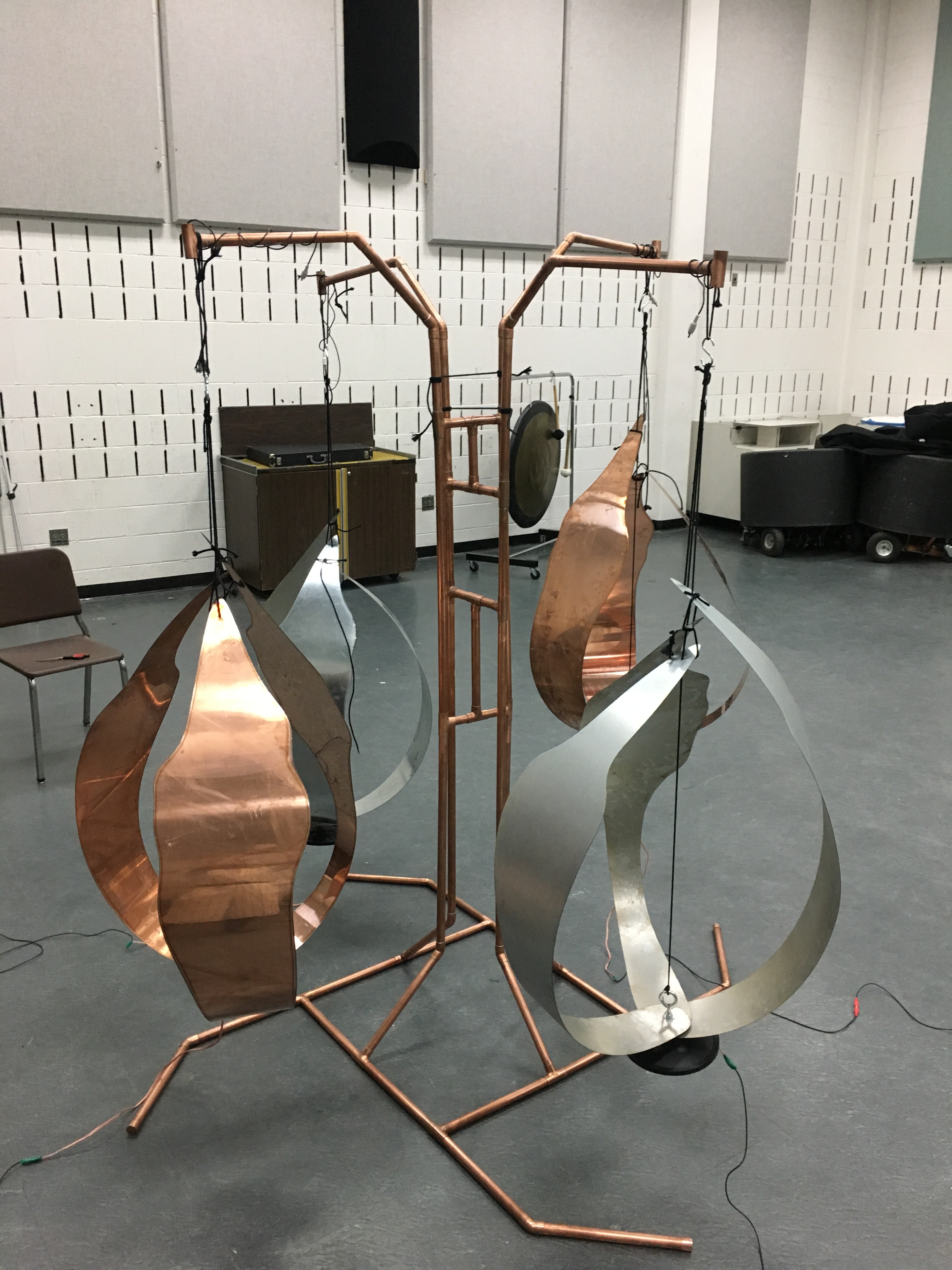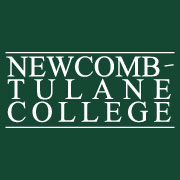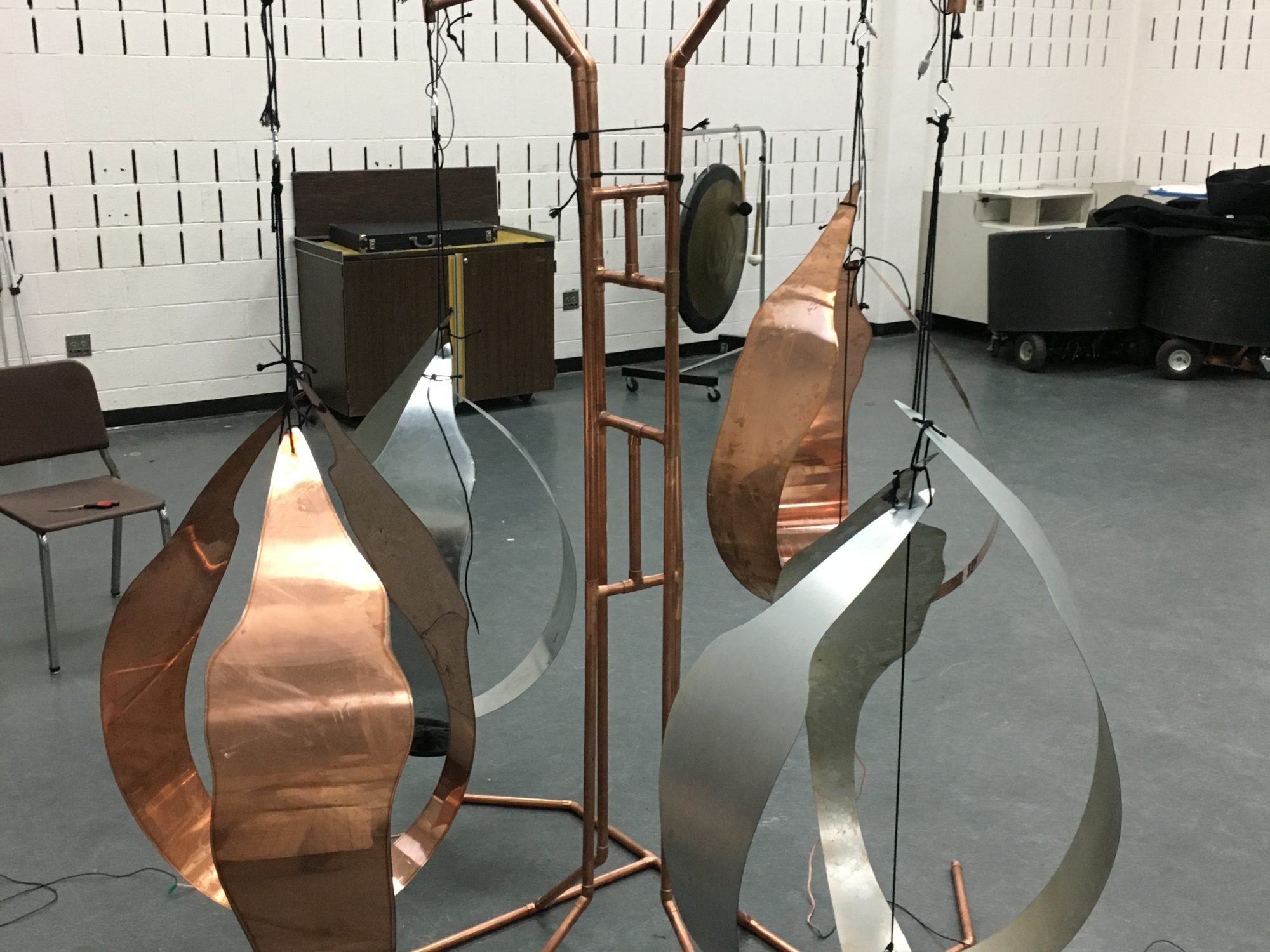Prepared by Spring Guilford, Jasmine Clark, William Nelson, and André Rincón Luna
The nature of our project included using sheet metal to construct what we call “Sound Sculptures.” The problem that encouraged us to team up with Dr. Snow in the music department is that there is no effective way to design and create accurate metal sound sculptures of predetermined resonant frequencies. He began working on this project prior to reaching out for assistance from graduating engineering physics seniors, but would conclude his efforts as inefficient because he did not have a program to predetermine resonant frequencies before construction. By including us into the project, we were able to enhance the overall audio performance of the sculpture while ensuring that they are accurate before manufacturing with our student developed program which enables the user to specify a desired musical note, A-G sharp or flat, which then converts it to its corresponding frequencies.
These sculptures are cut out by a plasma cutter at a facility we found on Tchoupitoulas. Being able to afford this plasma cutter allowed for us to quickly manufacture the sculptures and precise cutting essential to the accuracy of the program and sculptures. Speedy manufacturing was essential to the completion of this project as we needed to test the accuracy of our developed program. Majority of our granted budget was spent in this process. With the grant, we were able to purchase various materials of sheet metal along with plasma cutting sessions to test for accuracy of our program. The greatest obstacle we had before obtaining the grant was that the sheet metal was simply too expensive (especially our team’s most desirable copper) to buy multiple times. However, it was essential that we bought various sheets as our research and testing required fresh cuts for each trial.
The end product we created involved many enhancements in comparison to Dr. Snow’s previous sound sculpture installation. The transducer and software to predict frequencies were improved individually. Through extensive research, the chosen transducer was an enhancement by its increased amplitude and power acceptance. We also plan to find a way to discreetly conceal the associated wires by designing a stand to hold the sculptures and wiring which was simply out of scope before the grant was awarded to us. The incorporation of frequency predicting software allowed for the elimination of the process of trial and error in simple manufacturing as Dr. Snow would have to determine them after cutting the sheets. An overall seamless installation was designed and manufactured to promote ease of transportation and an aesthetically pleasing presentation. The grant was further used to purchase all electrical components including transducers and amplifiers, materials needed to manufacture the stand, and all shop work including cutting, rolling and soldering.
The Newcomb-Tulane College grant enabled us to fulfill our engineering capstone requirement with more ease. We did not have too many options in regards to funding for this project and the opportunity presented through the pursuit of this particular grant was endless. It gave us the ability to create throughout this semester whereas in the fall semester, our efforts were limited as our budget was relatively non-existent. Attaining this grant exposed us to the process in which we are expected to clearly communicate our design and product research and development process to an outside party in hopes that they also see the potential and will invest in the process. The grant awarded catapulted us in our progress, allowing us to produce a prototype up to par with our own standards while enabling us to perform much needed tests to ensure that the quality of the product is marketable in the future.
Written by Spring Guilford, project group leader and recipient of a Dean’s Grant, 2018-2019
https://ntcgrants.tulane.edu/wp-content/uploads/sites/190/2019/05/Guilford-Spring-Movie.mov


